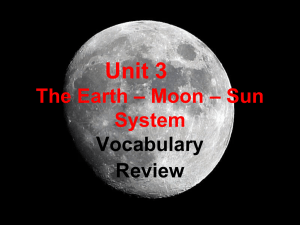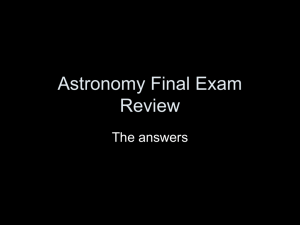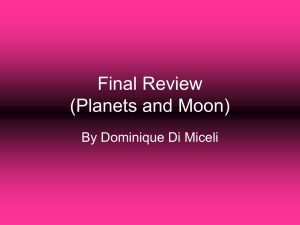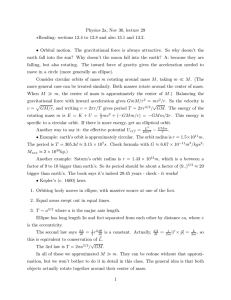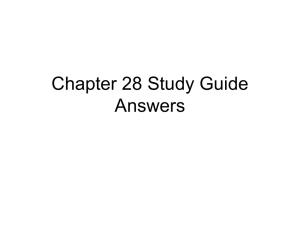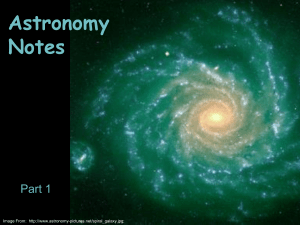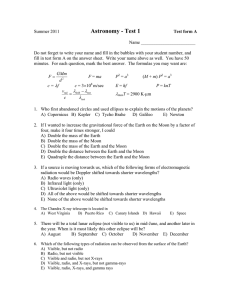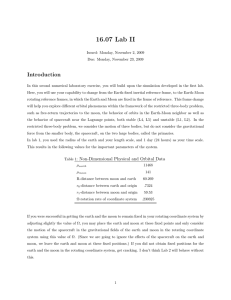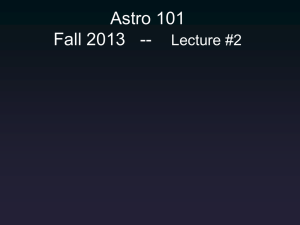Unit 6 Vocabulary
advertisement
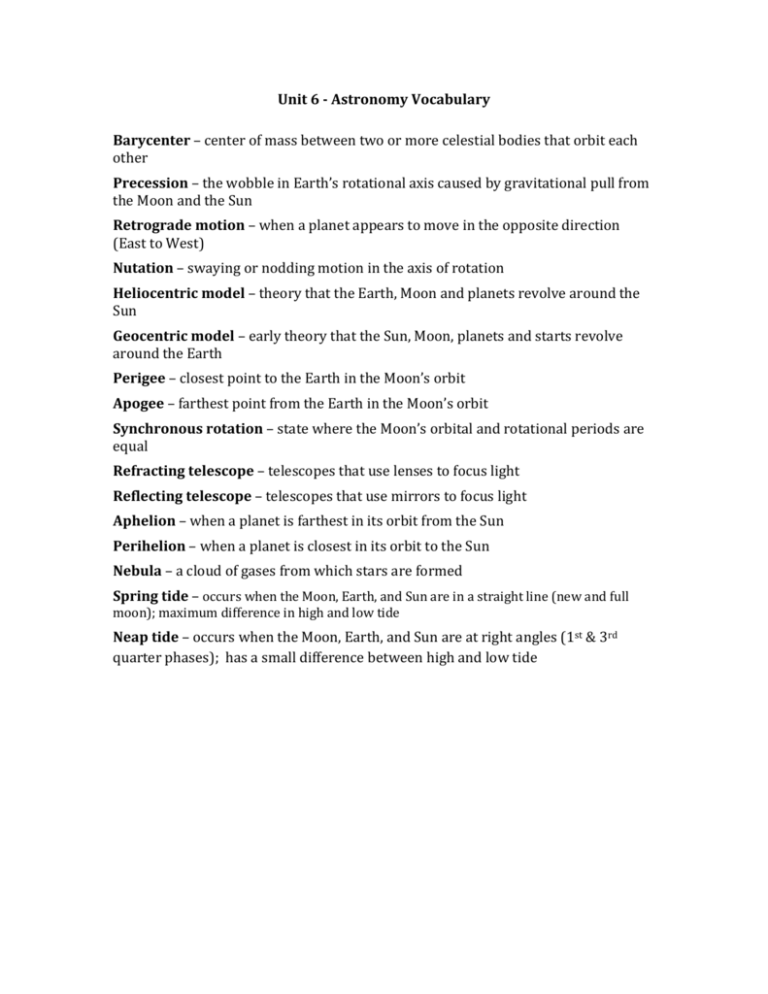
Unit 6 - Astronomy Vocabulary Barycenter – center of mass between two or more celestial bodies that orbit each other Precession – the wobble in Earth’s rotational axis caused by gravitational pull from the Moon and the Sun Retrograde motion – when a planet appears to move in the opposite direction (East to West) Nutation – swaying or nodding motion in the axis of rotation Heliocentric model – theory that the Earth, Moon and planets revolve around the Sun Geocentric model – early theory that the Sun, Moon, planets and starts revolve around the Earth Perigee – closest point to the Earth in the Moon’s orbit Apogee – farthest point from the Earth in the Moon’s orbit Synchronous rotation – state where the Moon’s orbital and rotational periods are equal Refracting telescope – telescopes that use lenses to focus light Reflecting telescope – telescopes that use mirrors to focus light Aphelion – when a planet is farthest in its orbit from the Sun Perihelion – when a planet is closest in its orbit to the Sun Nebula – a cloud of gases from which stars are formed Spring tide – occurs when the Moon, Earth, and Sun are in a straight line (new and full moon); maximum difference in high and low tide Neap tide – occurs when the Moon, Earth, and Sun are at right angles (1st & 3rd quarter phases); has a small difference between high and low tide


